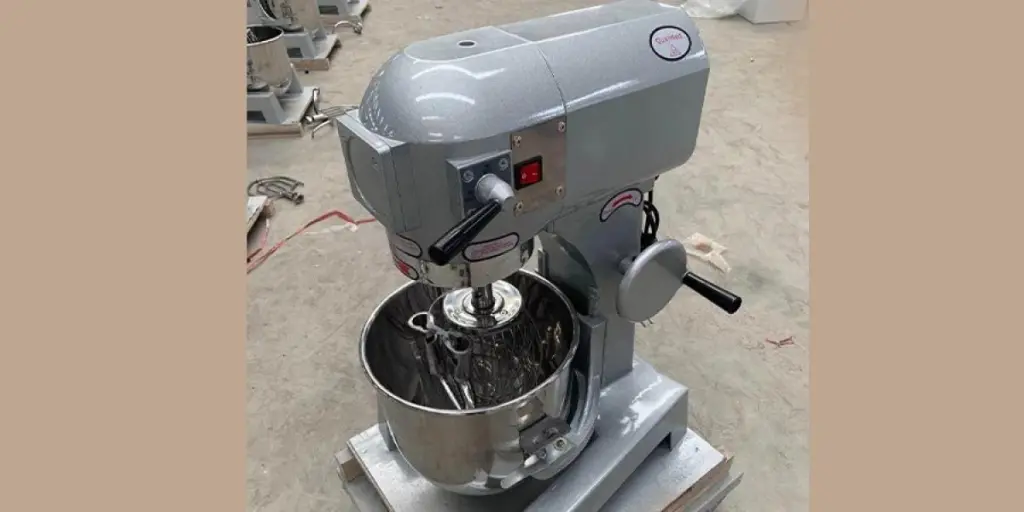Kneading dough by hand in a commercial kitchen can be an exhausting task, and this is why dough mixers have become so popular in kitchens around the world. However, for businesses that want the benefits of a dough mixer, it is important to purchase one that can effectively handle the job, improve day-to-day productivity, and contribute to the quality of the final product. This article will therefore shed light on factors to consider when choosing dough mixers so that businesses can confidently choose a model that meets their needs and suits their kitchen’s requirements.
Table of Contents
Market projection for dough mixers
Factors to consider when choosing a dough mixer
Types of dough mixers
Market projection for dough mixers
The global stand mixer market growth is projected to grow at a compound annual growth rate (CAGR) of 6.5% between 2021 and 2030. Although the tilt-head dough mixers had the largest market share in 2020, the bowl lift mixer is expected to see the highest CAGR within the forecast period.
This projected growth is driven by several factors such as the expected increase in demand for ready-to-eat breakfast products; heightened focus on the consumption of properly baked food products across the globe; enhanced awareness about healthy eating habits worldwide; and product upgrades and new product launches that improve the appeal of dough mixers.
Factors to consider when choosing a dough mixer
Choosing the best dough mixer for your commercial kitchen requires evaluating the business’ needs and preferences before settling on equipment. Some factors to keep in mind are:
Cooking needs
The first consideration should be what is the amount and type of dough to be mixed. A small stand mixer may do the job if one wants to bake pastries and desserts or make pasta, ravioli, or tamales.
On the other hand, larger dough for making bread or big batches of cookies requires a bigger dough kneader. The needs for the baking process also determine the type of attachments to acquire with the mixer.
Weight
If choosing a hand mixer, one should stick to a lighter and easy-to-hold machine that allows effortless mixing, as a heavy hand mixer could be difficult to operate for extended periods.
However, heavy and sturdier stand mixers are great for larger cooking projects as they are far more sturdy. Stand mixers can be placed at a fixed location where they should not be regularly moved, otherwise their weight could be an issue.
Generally, dough mixers of at least 20 pounds are an excellent choice for mixing thick dough while staying stable on the surface.
Horsepower and mixing speed
The ideal mixing speed is determined by the type of foods being mixed, with speeds ranging from 3 to 12. Most bakery mixers have “slow start” speed settings that allow bakers to add ingredients such as flour while mixing without causing a mess.
Mixers also have medium and high-speed settings for more precise cooking. Mixing speed is also connected to horsepower since dough mixers with high horsepower are expected to have a high-speed operation.
A busy commercial kitchen, for example, may need a dough kneader with high horsepower to meet the demand, otherwise the machine may break down faster, which could inflate maintenance and repair costs.
Size
The size of the dough mixer one should buy depends on the available space in the kitchen and the quantity of food to be mixed in the machine.
The market has a wide range of sizes available, with bigger models costing more than smaller models. A large kitchen that bakes commercially requires a larger dough mixer and this would justify the high price tag. However, if the dough mixer is for cooking for a family or only a few clients, investing in a small or medium size machine could be a better option.
Attachments
Attachments can expand the functions of dough mixers, enabling bakers to try new recipes. Some of the most common attachments include:
A dough hook: This C-shape or spiral-shaped attachment helps make goods that require kneading, such as pizza and bread dough.
Wire whips: These are used for making whipped cream, meringue, and frosting.
A fat beater: This is ideal for making cake batter, mashed potatoes, and cookie dough.
Other dough kneader attachments include a pasta roller, ice cream maker, slicer, grain mill, sausage stuffer, food grinder, fruit and vegetable strainer, and sauce attachment.
Noise level
Kitchen mixers are often loud, especially the electric models. However, some dough mixer models are louder than others. For kitchens where noise might be a problem, or for individuals who are sensitive to loud noises, a quieter model should be prioritized.
Ease of cleaning
Hand mixers are easier to clean than stand mixers. Stand mixers have many parts that need to be cleaned separately. For instance, the mixing bowl may require hand washing, depending on the type of mix. A great strategy to find the right machine is to examine published reviews to eliminate dough mixers that are troublesome to clean.
Maximum kneading capacity
When considering mixing capacity, there are two main factors to keep in mind: the motor power and the volume of ingredients the bowl can hold.
Dough mixer bowl capacity usually ranges from 5 to 140 quarts, but most commercial kitchens work well with a 60-quart mixer. Finding the right bowl volume is essential, especially when mixing icings, whipped toppings, or recipes that can fill the bowl. It’s important to ensure they can rise to the top of the bowl without overtaxing the motor.
However, kitchens that primarily mix heavy ingredients such as bread dough or pizza focus on the motor’s mixing capacity rather than the bowl’s volume. If the dough is very thick, certain motors can overheat and stall, and so it’s essential to make sure one finds a mixer with the right motor power.
Types of dough mixers
There are many different kinds of commercial dough mixers available on the market, each with its own unique advantages. The mixer one ultimately chooses should depend on the dough volume to be produced, the size of the kitchen area, and the type of product to be baked.
Planetary Mixer
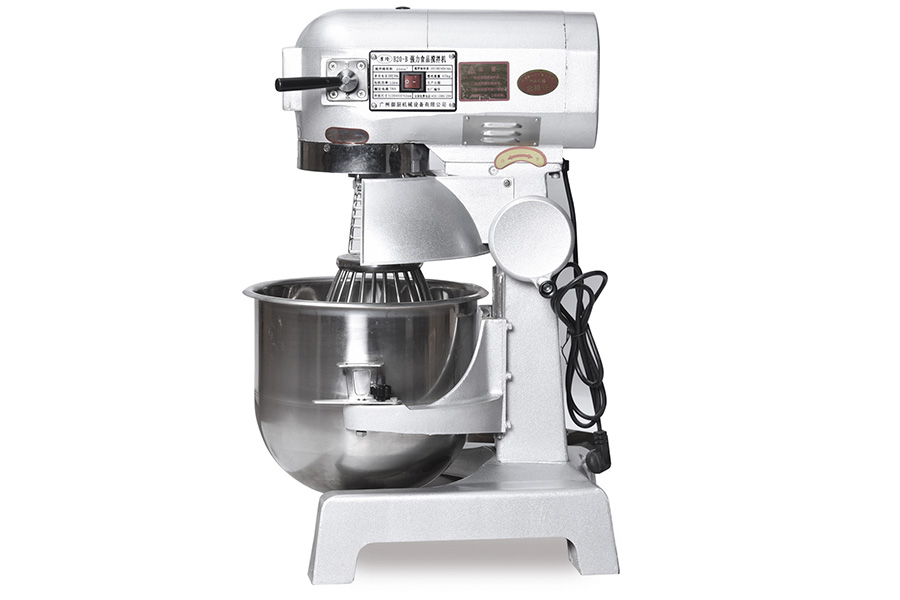
Planetary mixers are commonly used in Commercial kitchens. They have a central mixing wand that can be changed to suit one’s mixing needs. The mixer has a stationary bowl that holds the ingredients while the wand rotates to perform the mixing. They can be used to mix a wide range of substances.
Pros
- The bowl can be detached and moved with ease once the mixing is done
- It is smaller, and so is suitable for kitchens with limited space
- Low wear and tear, which means little maintenance is required
- Limited wastage of materials
Cons
- The level of mixing may not be uniform between the top and bottom
- It generates heat that could be unsuitable for mixing some ingredients
- It needs more energy when handling ingredients with high viscosity
Spiral Mixer
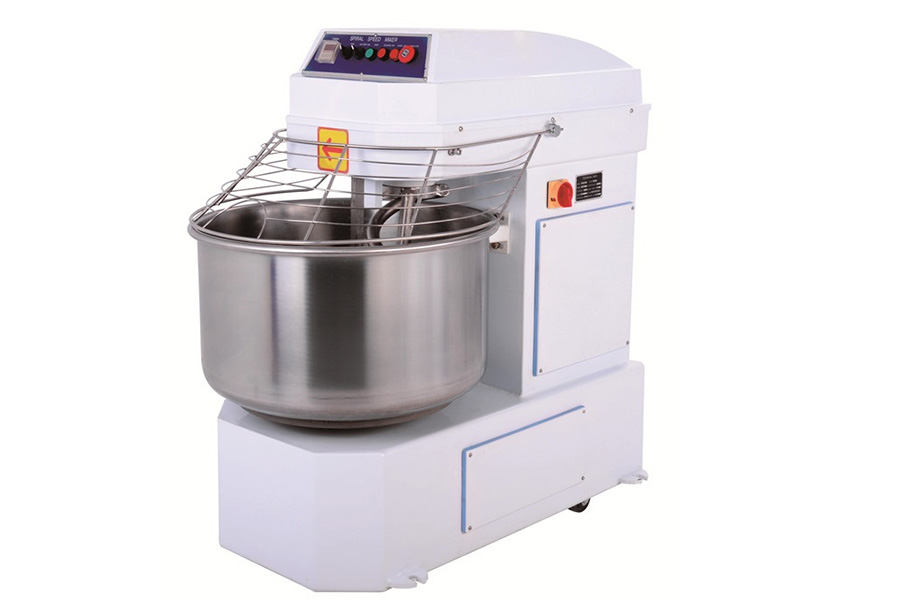
The spiral mixer is one of the most popular dough mixers, loved for its flexibility and use in different settings. It is efficient with the ability to mix the dough thoroughly. The bowl holding the ingredients rotates around spiral-shaped blades with little friction. And it comes in various sizes that fit different dough outputs.
Pros
- It is gentler on the dough, which means friction heat is not a big deal
- It produces a wide range of products with consistent quality
- It is energy-efficient and cost-effective
Cons
- It has a lower capacity when compared to other mixers
- A spiral mixer is meant for dough since it does not have an accessory hub for attachments
Horizontal mixer
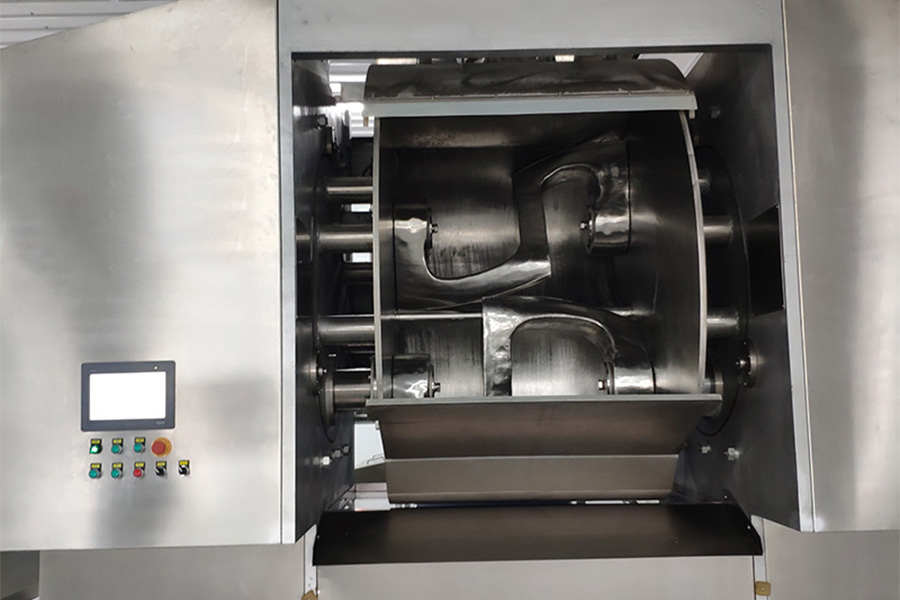
A horizontal mixer has a large capacity and can produce large volumes of dough mixes within a short time period. Its configuration allows dough to be mixed while the next batch is fed into the mixer.
When the mixing is complete, the dough drops into a trough for convenient transport.
Pros
- It has a large mixing capacity
- It has mixing arms that make it easy to customize according to the dough being mixed
- Improved efficiency and time saving due to continuous mixing
Cons
- It does not keep the temperature down during the mixing process
- The dough generates friction, thus increasing the temperature as it rubs against the side of the bin, which may not be ideal for some yeast
Fork Mixer
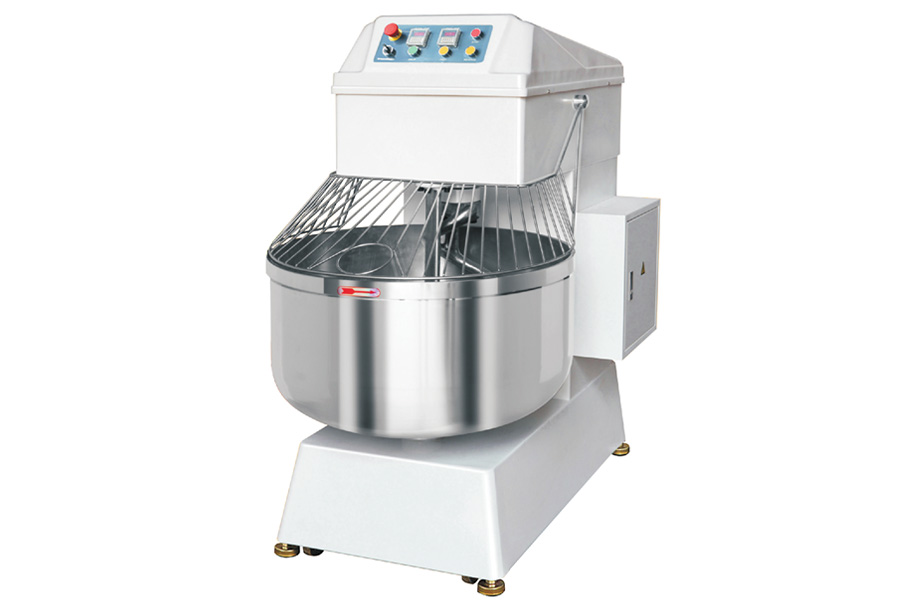
A fork mixer is a special dough mixing machine designed to prevent the dough from heating when mixing. It consists of two-prolonged agitators and a free-spinning bowl that can run slowly or at high speed, depending on the ingredients.
The slow-speed settings allow this machine to be gentle on the dough and to mix longer for finer results. Fork mixers prepare high-quality dough, especially non-fluid dough, for pizza and bread without heating it.
Pros
- It is durable
- The design stimulates movement that ensures a natural leavening process
- It gently mixes the dough to reach maximum development without overmixing
Cons
- Its power consumption and mixing time are higher than average
- It is not ideal for small batches
Conclusion
Dough mixers take a considerable amount of capital investment for commercial kitchens. While the market offers various kinds of mixers, it is essential to ensure that the machine selected meets one’s operating needs and results in a positive return on investment.
A business can save time and money in the long run by making sure they carefully choose the right machine that suits their baking needs. This guide has therefore highlighted what to look for when selecting a mixer, so that businesses can find the perfect model.
